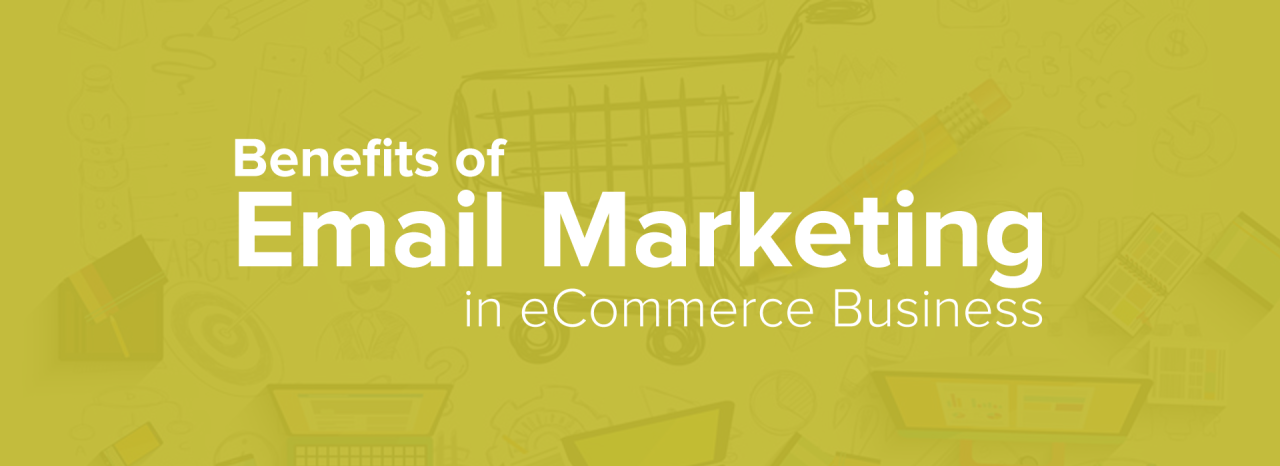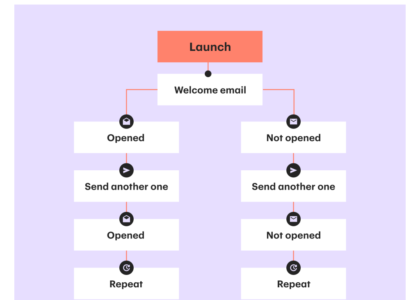“Is email marketing worth the investment?“
If you’re running an e-commerce business in 2025, you know every dollar counts. Between software tools, marketing campaigns, and customer service, the costs can pile up. So, you might be wondering: Is email marketing worth the investment?
The short answer: Absolutely YES.
In a world buzzing with TikTok trends and influencer shoutouts, email marketing continues to be the reliable workhorse of e-commerce success. Why? Because it lets you talk directly to your audience – no middleman, no algorithm, just you and your customers.
With the right email marketing strategies, you can build lasting relationships, automate time-consuming tasks, and generate consistent revenue. Wondering where to start? Our experts at Abervin Digital are happy to help!
From segmentation to A/B testing and automated follow-ups, we’ll help you turn emails into profits. Go visit Abervin Digital to check out our pricing and packages.
That said let’s explore why email marketing should be at the forefront of your e-commerce strategy in 2025.
1. Email Marketing Delivers Consistent ROI
Email marketing doesn’t just work – it works consistently. While social media platforms are subject to algorithm changes, your email list is full of people already interested in your brand. Here’s what you can expect from email campaigns:
- Open Rates: Open rates are around 40%, with top brands hitting Open rates of 56% per send.
- Click Rates: Average CTR is 1.5% and can be up to 5% for the best campaigns
- Order Rates: Conversion/Order rates can be up to 0.5% – a seemingly small but mighty conversion rate
Automated emails do even better, with:
- Open Rates: averaging 52.04% and reaching peak numbers of up to 68.08% for top performers
- Click Rates: 5.31%, up to 12.98% for top brands
- Revenue Per Recipient (RPR): $1.94 on average, reaching $16.96 for top performers
Email marketing is not only more effective but also more cost-efficient than many other digital marketing channels. The Data & Marketing Association (DMA) reports that the return on investment (ROI) for email marketing averages $42 for every $1 spent. In comparison, the ROI for social media advertising is often less predictable due to fluctuating ad costs and changing platform algorithms.
2. You Have Full Control with Email Marketing
Unlike social media platforms, which rely on algorithms to determine content visibility, email marketing ensures that your message lands directly in the inbox of your audience. This distinction becomes increasingly important with technological changes like Apple’s iOS 14.5 update, which has significantly impacted social media targeting.
Apple’s iOS 14.5 update, which introduced the App Tracking Transparency framework, limits the ability of apps to track user behavior without explicit consent. As a result, businesses relying heavily on social media advertising have faced challenges in delivering targeted ads. A study by Branch Metrics reported that opt-in rates for app tracking hover around 25%, leaving a significant portion of users out of reach for precise targeting. Email marketing, however, remains unaffected by these changes, providing a dependable and consistent way to engage with your audience. And it gives you full control.
Email marketing consistently outperforms social media in key engagement metrics such as reach, open rates, and click-through rates (CTR). According to a study by Campaign Monitor, email open rates average between 18-20% across industries, with some sectors reaching as high as 40-45%. In comparison, organic reach on Facebook often falls below 5%, and Twitter engagement rates hover around 0.5%.
When it comes to click-through rates, email marketing surpasses social media by a significant margin. Research by Mailchimp reveals that average email CTRs range from 2-5%, whereas CTRs for Facebook and Twitter ads are often below 1%. This means email marketing is 50-100 times more effective in driving traffic and conversions than social media platforms.
Our experts here at Abervin Digital can help you use email marketing as a means to network (B2B Outreach) build better brand-customer relationships (B2C) and increase brand awareness.
3. Fast, Measurable Results with Email Marketing
One of the biggest advantages of using email marketing is how quickly it allows businesses to see the impact of their efforts. Unlike traditional marketing channels that may take weeks or months to gauge effectiveness, email campaigns provide near-instant feedback through metrics like open rates, click-through rates, and conversion rates. For instance, a report by HubSpot highlights that 78% of marketers have seen increased email engagement within 24 hours of sending a campaign.
With access to data that updates in real-time, businesses can evaluate what’s happening at any given moment and use that insight to make smart, timely decisions without delay. For instance, when you take the time to review your open rates, you can gain valuable insights into which subject lines are capturing your audience’s’ interest the most. Analyzing click-through rates provide insight into which content or offers drive engagement, while analyzing conversion rates reveal the effectiveness of your call-to-action.
With email marketing, you have the opportunity to try out A/B testing. This involves creating two slightly different versions of an email and sending each one to separate groups within your audience. By comparing how each version performs, you can figure out which one gets better results, helping you improve your overall email strategy.. According to a study by Econsultancy, when done effectively, trying out different versions of your email campaigns can improve return on investment for your email marketing efforts by as much as 37%. This iterative approach ensures that your campaigns evolve in response to audience preferences, leading to higher engagement and faster results compared to most other marketing methods.
4. Personalization is Easy with Email
Personalized emails give your readers a feeling that generic messages simply cannot achieve. According to research by Statista, emails with personalized subject lines have a 26% higher open rate compared to those without. When customers feel that the content resonates with their needs or interests, they are more likely to engage with the email and take action.
This approach taps into the psychological principle of reciprocity when businesses invest effort into understanding and addressing individual preferences, customers are more inclined to respond positively. Moreover, personalization reduces information overload, a common issue in today’s digital world, by providing content that feels curated rather than intrusive.
Audience segmentation is one of the main ways to achieve, a practice where you divide your subscriber base into smaller, more manageable groups based on specific criteria. This can include:
- Behavioral Data: Analyzing how people interact with your content, such as tracking the links they click on, the files they download, or the amount of time they spend on particular pages of your website, can provide valuable insights into their behavior.
- Purchase History: Identifying patterns in buying behavior to recommend relevant products or services.
- Engagement Metrics: Observing how recipients interact with previous emails – for instance, frequency of opening or clicking.
A notable example is Amazon’s use of purchase history to suggest products in follow-up emails. According to a report by Econsultancy, 80% of consumers are more likely to purchase from brands that offer personalized experiences, highlighting the significance of such targeted campaigns. Several businesses have leveraged email personalization to achieve remarkable results:
Sephora: Uses purchase history and browsing behavior to send targeted product recommendations and exclusive offers.
Spotify: By creating “Your Year Wrapped” campaigns that summarize users’ listening habits, Spotify boosts user engagement while promoting its premium services.
Netflix: Personalizes recommendations in its email campaigns based on viewing history, leading to higher click-through rates.
Email personalization is no longer a “nice-to-have” feature but a necessity if you want to create campaigns that not only drive revenue but also build long-lasting relationships with your customers.
5. Email Reaches Customers at Every Stage
Using Email Marketing in your eCommerce business allows you to engage customers at every stage of their journey, from initial acquisition to returning customers and long-term loyalty. For new customers, welcome emails can introduce brand values and offerings, setting the tone for a positive relationship. For returning customers, tailored recommendations and exclusive offers can encourage repeat purchases and brand loyalty.
A study by Constant Contact showed that 27% of consumers never hear from a business after their initial purchase, despite 81% being open to further communication. This usually leads to a loss of clientele, costing businesses more to acquire new customers which often involves advertising expenditures and promotional offers. With effective email marketing for your eCommerce business, you’ll get improved customer retention and engagement, which directly impacts your Customer Lifetime Value (CLV).
Customer Lifetime Value represents the total revenue a business can expect from a single customer account over time. Email marketing significantly contributes to increasing CLV by building customer relationships through targeted campaigns, upselling, and cross-selling strategies. So your subscribers get relevant content and offers that are perfect for them which leads to repeat purchases, and by extension improved CLV.
6. Email Marketing Addresses Data Privacy Concerns
According to a 2023 report by Cisco, 81% of consumers consider data privacy as a key factor when engaging with brands, and 48% have switched companies due to poor privacy practices. So it is safe to say data privacy has become a central concern for consumers – and your eCommerce business is not exempt. However, because eCommerce Email marketing inherently supports data privacy initiatives by operating on an opt-in model, it offers a unique advantage in addressing these concerns.
When customers subscribe to a mailing list, they provide informed consent to receive communications. This approach ensures compliance with the GDPR guidelines, which emphasize that consent must be provided willingly, be clear and specific about its purpose, and leave no room for misunderstanding.. Unlike other channels that may rely on passive data collection, eCommerce email marketing ensures that users actively choose to engage with a brand.
By respecting user privacy, eCommerce businesses can build trust and loyalty. A 2023 Edelman Trust Barometer report found that 74% of consumers are more likely to recommend a brand that takes data privacy seriously. To ensure compliance with data privacy policies and build trust with your customers, eCommerce businesses should implement Double Opt-In, include a link to your privacy policy in every email and sign-up form to educate subscribers on how their data will be used and protected as well as offer your subscribers the ability to customize their email preferences, such as frequency or type of content, which gives them greater control.
7. Save Time with Automated Email Marketing
Automating your email marketing is not just about saving time; it’s about delivering the right message to the right audience at the right time. Automated email marketing means brands can maintain consistent communication with their audience without requiring constant manual input.
The experts at Abervin Digital can help you create tailored email automation workflows that not only save you time but also boost your bottom line. Visit our website to see what packages work for your business.
That said, here’s a detailed look at the key types of email automation and how they can transform your business:
I). Welcome Series: Making a Strong First Impression
The moment a new subscriber joins your email list is super important. Research shows that welcome emails can drive 320% more revenue per email than standard promotional emails, making them one of the most effective tools for engaging new subscribers. So a well-designed welcome series introduces your brand, sets expectations, and builds trust right from the start. By highlighting your unique value proposition in your welcome emails, you’re more likely to convert new subscribers into loyal customers.
Key Features of a Successful Welcome Series:
- Personalization: Address the recipient by name and create content that references their sign-up source.
- Timing: Send the first email immediately after subscription, followed by a series of 2-3 emails spread over a week.
- Content: Include a warm introduction, links to popular products or services, and a special welcome offer like 20% a purchase or BOGO offers.
II). Cart Abandonment Emails: Recover Lost Sales
It’s estimated that 70% of online shopping carts are abandoned before checkout. This is where automated cart abandonment emails come in handy. These emails act as friendly nudges, encouraging customers to come back and finish the checkout process for the items they’ve shown interest in but haven’t yet purchased. This can recover up to 20% of lost sales, making them a must-have for your e-commerce business in 2025.
Effective Cart Abandonment Strategies:
- Reminder Triggers: Send the first email within an hour of cart abandonment.
- Incentives: Offer discounts or free shipping to entice customers to complete their order.
- Social Proof: Include customer reviews or ratings for the abandoned products.
III). Cross-Sell Emails: Boost Average Order Value
Cross-selling emails recommend complementary products based on a customer’s previous purchases. By studying the data in the analytics section of your email marketing platform, you can create emails that suggest items that align with your recipient’s interests, increasing the likelihood of additional sales. Studies have shown that when businesses effectively suggest related products or services to their customers, they can see an increase in their overall revenue ranging anywhere from 10% to 30%.
Best Practices for Cross-Sell Emails:
- Data-Driven Recommendations: Make personalized suggestions based on the information you’ve gathered, such as what your customers have bought in the past or the types of items they’ve shown interest in while browsing your site.
- Visual Appeal: Include high-quality images and concise descriptions of the recommended items.
- Timing: Send cross-sell emails shortly after the initial purchase or during seasonal promotions.
IV). Post-Purchase Follow-Up: Nurturing Long-Term Relationships
A customer’s experience with your brand doesn’t stop the moment they decide to buy something; in fact, that’s just the beginning of building a lasting relationship. Post-purchase follow-up emails are essential for retaining customers and encouraging repeat business. They’re also a great opportunity to collect feedback and reviews, which can enhance your brand’s credibility.
Components of an Effective Post-Purchase Email:
- Order Confirmation and Thank You: Reassure customers with a summary of their order.
- Product Use Tips: Provide guidance on how to use or maintain their purchased items.
- Review Requests: Politely ask for a review or testimonial to build social proof.
V). Win-Back Campaigns: Re-Engage Dormant Subscribers
Inactive subscribers are not necessarily lost customers. The goal of a win-back campaign is to rekindle interest by reminding customers of your brand’s value. On average, win-back emails have a 12% success rate in re-engaging dormant subscribers.
Win-Back Campaign Tactics:
- Personalized Offers: Provide exclusive discounts or special deals to entice inactive subscribers.
- Emotional Appeal: Use language that conveys appreciation for their past support.
- Feedback Requests: Ask why they’ve been inactive and how you can improve their experience.
By implementing workflows such as welcome series, cart abandonment, cross-sell, post-purchase follow-up, and win-back campaigns, you can stay connected with your audience while focusing on other aspects of your business.
8. Stay Top of Mind with Your Audience Through Regular Communication
Maintaining a strong presence in your audience’s mind is important if you want your eCommerce business to succeed. Consistent email communication ensures that your brand stays at the forefront of customers’ minds which is why sending regular updates about promotions, product launches, or company news keep your audience informed and engaged.
A substantial 71% of consumers expect personalized communications from brands, and 76% feel frustrated when this expectation isn’t met. This is why incorporating regular, valuable emails into your marketing strategy is essential for keeping your brand top-of-mind among your audience.
So put simply…
Email marketing is a must-have for any ecommerce business looking to grow. It’s a proven tool for driving revenue, improving customer retention, and staying connected with your audience. To learn how to improve your email marketing strategy, contact Abervin Digital at +1 307-271-5184 or visit Abervin Digital.
Email marketing shouldn’t just be something you think about now and then; it should be something you focus on and make a top priority if you want to see your business truly succeed and grow.






